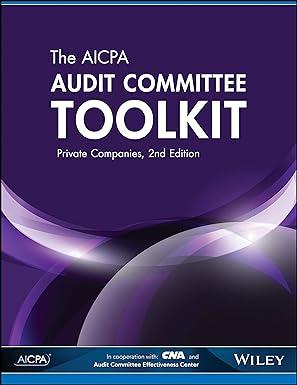Answered step by step
Verified Expert Solution
Question
1 Approved Answer
in the following problems, Use equity risk premium of 5.5 percent if none is specified in the following problems, Use equity risk premium of 5.5

in the following problems, Use equity risk premium of 5.5 percent if none is specified
in the following problems, Use equity risk premium of 5.5 percent if none is specified
4. The following is the balance sheet for Ford Motor Company as of December 31, 1994 (in millions). Assets Cash Receivables Inventory Current assets Fixed assets $ 19,927 $132.904 $ 10,128 $ 91,324 $ 45,586 Liabilities Accounts payable Debt due within 1 year Other current liabilities Current liabilities Short-term debt Long-term debt Equity Total liabilities $ 11,635 S 36,240 $ 2,721 $ 50,596 $ 36,200 $ 37,490 $ 12,824 $137,110 Total assets $137,110 The firm had revenues of $154,951 million in 1994 and cost of goods sold of $103,817 million, a. Estimate the networking capital b. Estimate the noncash working capital. c. Estimate noncash working capital as a percent of revenues. 5. Continuing problem 4, assume that you expect Ford's revenues to grow 10% a year for the next five years. a. Estimate the expected changes in noncash working capital each year, assuming that noncash working capital as a percent of revenues remains at 1994 levels. b. Estimate the expected changes in noncash working capital each year, assuming that noncash working capital as a percent of revenues will converge on the industry average of 4.3% of revenues. 6. Newell Stores is a retail firm that reported $1 billion in revenues, $80 million in after-tax operating income, and noncash working capital of-50 million last year. a. Assuming that working capital as a percent of revenues remains unchanged next year and that there are no net capital expenditures, estimate the free cash flow to the firm if revenues are expected to grow 10% b. If you are projecting free cash flows to the firm for the next 10 years, would you make the same assumptions about working capitul? Why or why not? A negative effective tax rate usually arises because a firm is reporting an income in its tax books (on which it pays taxes) and a loss in its reporting books. 2 Since the effective tax rate is based on the taxes paid (which comes from the tax statement) and the reported income, the effective tax rate will be lower than the marginal tax rate for firms that change accounting methods to inflate reported earnings It is only the tax-deductible amortization that really matters. To the extent that amortization is not tax deductible, you would look at the EBIT before the amortization and not consider it while estimating net capital expenditures. tel Step by Step Solution
There are 3 Steps involved in it
Step: 1

Get Instant Access to Expert-Tailored Solutions
See step-by-step solutions with expert insights and AI powered tools for academic success
Step: 2

Step: 3

Ace Your Homework with AI
Get the answers you need in no time with our AI-driven, step-by-step assistance
Get Started


